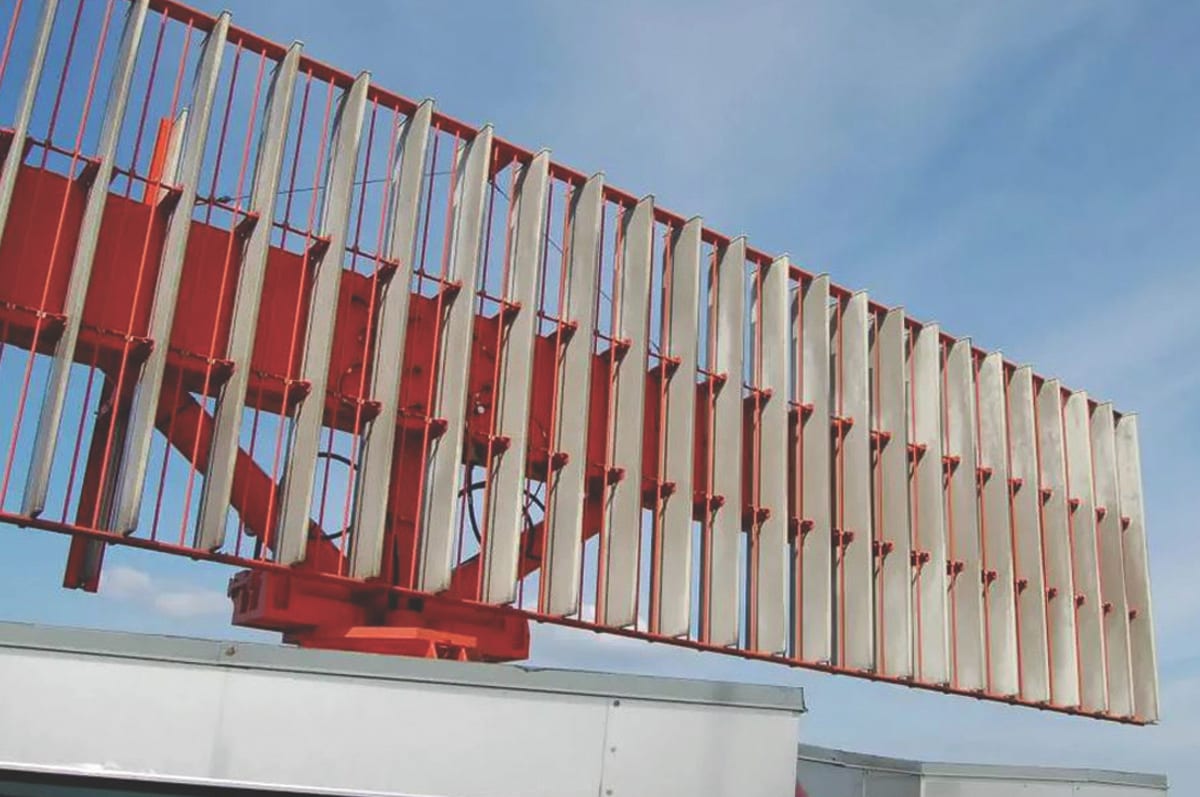
Thales has launched its next-generation secondary surveillance radar system, RSM NG. (Thales)
A new generation of digital software-centric secondary surveillance radar system technology, RSM NG, uses a meta-sensor that fully integrates Enhanced Mode S and Automatic Dependent Surveillance-Broadcast (ADS-B).
The new RSM NG system, launched by Thales on March 17, has the ability to track up to 2,000 flight tracks and can communicate with other radars from the same cluster to limit the number of interrogation and thus reduce radio frequency (RF) pollution. Marie Gayrel, director of ATC radar activities for Thales, told Avionics International that this is the first time they have featured ADS-B surveillance inside their secondary surveillance radar technology.
“It’s a meta sensor in the sense that it is both a secondary radar system and ADS-B,” Gayrel said. “You can have several air traffic control centers fed by one RSM NG at the same time.”
One of the world’s largest air navigation service providers (ANPs), the Federal Aviation Administration, has already signed for acquisition of a customized version of RSM NG. In January 2020, Leidos and Thales confirmed their award of a new Mode S Beacon Replacement System (MSBRS) contract from the FAA. The contract calls for the supply of up to 142 secondary surveillance radars delivered to the agency for use within the U.S. air traffic system.
Secondary surveillance radar is designed to interrogate and understand what aircraft are flying in airspace at any given time and identify those who could be bad actors, Gayrel explained.
RSM NG’s meta sensor approach allows for the once per second broadcast emitted by ADS-B transponders, which also include the aircraft’s ID, altitude, speed, velocity and projected path among other variables. Thales has also focused on software upgradeability for the new system, along with a virtual machine.
“The virtual machine is not in the cloud, it is hosted on a PC inside the radar. You remain in the environment of the radar, which is critical to the cyber and safety of the operation. We want the operator to be able to monitor and prevent intrusion,” Gayrel said, adding that the new system has an 80,000 hour or nine-year life span.
Overall design weight and volume have been reduced by 30 percent, with the new system feature two electronic cabinets as opposed to three in the previous generation.
“That was the constraint we gave to the engineering team because we realized both for the installation and lifecycle costs, this was important for our customers. In some cases the space available for the cabinets of radar is not that big, and people do not want to build another building or structure to host the cabinets.” Gayrel said. “The less hardware you have, the less problem you have in the longer term, think about the timeline of this type of radar, it could be 10, 15 sometimes 25 years.”